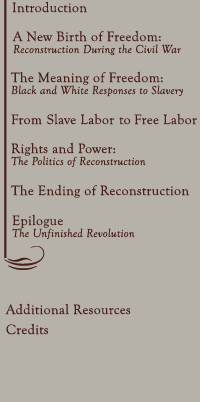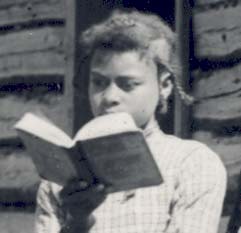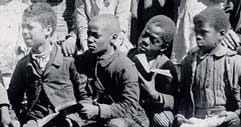




Building the Black Community: The School

Education, denied them under slavery, was essential to the African-American understanding of freedom. Young and old, the freedpeople flocked to the schools established after the Civil War.
For
both races, Reconstruction laid the foundation for public schooling in
the South.
 Northern benevolent societies, the Freedmen's Bureau, and, after 1868,
state governments, provided most of the funding for black education, but
the initiative often lay with blacks themselves, who purchased land, constructed
buildings, and raised money to hire teachers.
Northern benevolent societies, the Freedmen's Bureau, and, after 1868,
state governments, provided most of the funding for black education, but
the initiative often lay with blacks themselves, who purchased land, constructed
buildings, and raised money to hire teachers.
The desire for learning led families to move to towns and cities so that
their children could have access to education, and children to instruct
their parents after school hours.
Reconstruction
also witnessed the creation of the nation's first black colleges, including
Howard University in Washington, D.C., Fisk University in Tennessee and
Hampton Institute in Virginia.
Initially, these institutions emphasized the training of black teachers
and by 1869, blacks outnumbered whites among the nearly 3,000 men and
women teaching the freedpeople in the South.
Before the Civil War, only North Carolina among Southern states had established a comprehensive system of education for white children. During Reconstruction, public education came to the South.
Copyright
2003